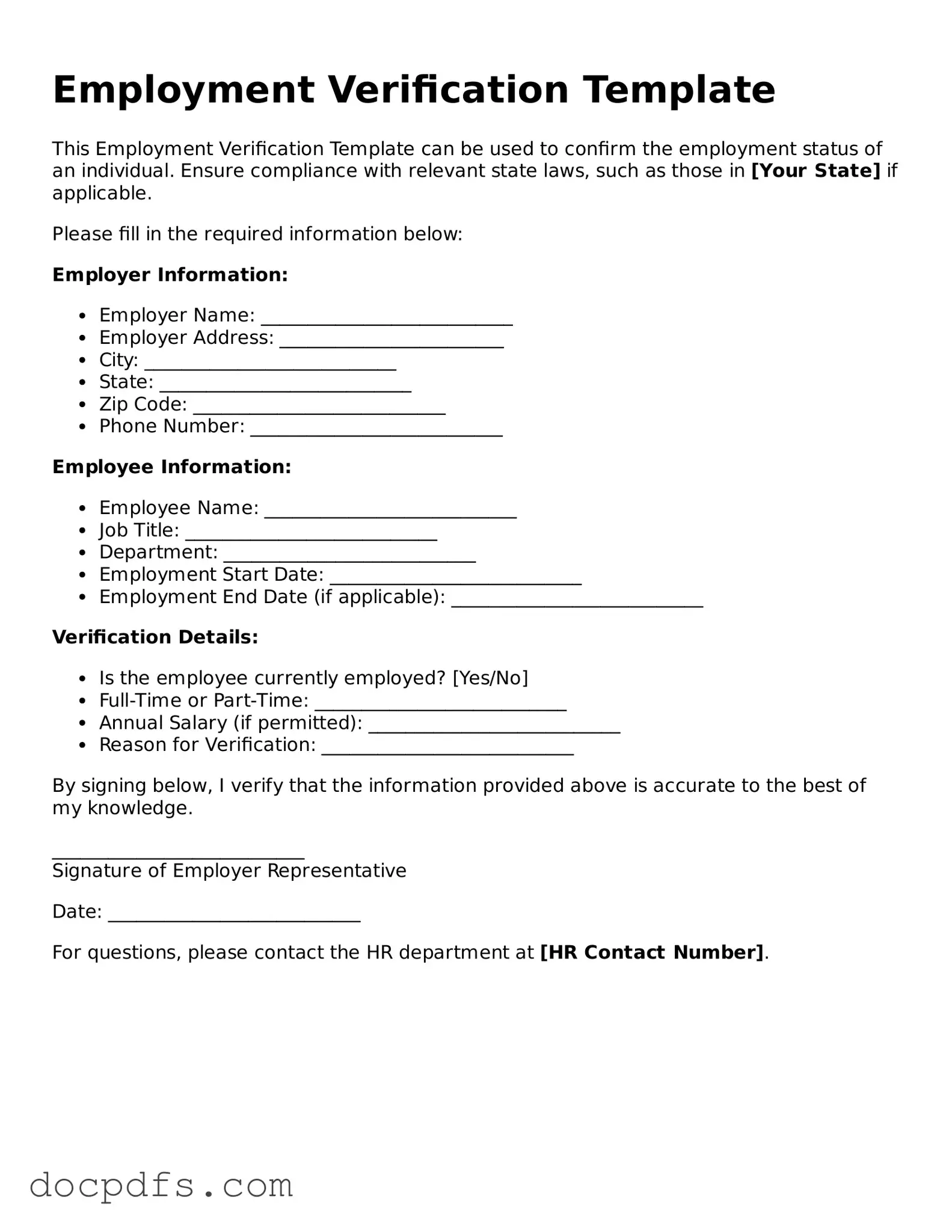The Employment Verification form is a document used to confirm an individual's employment status, job title, and dates of employment. Employers often request this information to verify a candidate's work history during the hiring process or for other purposes, such as loan applications or background checks.
Various parties may request an Employment Verification form, including:
-
Potential employers during the hiring process
-
Financial institutions for loan applications
-
Landlords when renting a property
-
Government agencies for benefits verification
Typically, the form includes:
-
The employee's name and contact information
-
The employer's name and contact information
-
The employee's job title and responsibilities
-
The dates of employment
-
Salary information, if applicable
-
Reason for employment verification request
To complete the form, follow these steps:
-
Provide your personal information accurately.
-
Fill in your employer’s details, including their name and contact information.
-
List your job title and a brief description of your responsibilities.
-
Indicate your dates of employment.
-
Sign and date the form to authorize the release of your information.
While you can choose not to provide the form, keep in mind that doing so may hinder your job application or other processes requiring verification. Many employers view this as a standard procedure, so it's often beneficial to comply.
How long does it take to receive the completed Employment Verification?
The time it takes to receive a completed Employment Verification can vary. Generally, it may take anywhere from a few days to a couple of weeks, depending on the employer's response time and their internal processes.
If your Employment Verification form is denied, it’s important to understand the reason. You can:
-
Request clarification from the requesting party.
-
Contact your former employer to discuss the situation.
-
Provide additional documentation or references to support your employment history.
In most cases, there is no fee for processing an Employment Verification form. However, some employers or third-party services may charge a fee for their time and resources. It’s best to inquire about any potential costs upfront.
